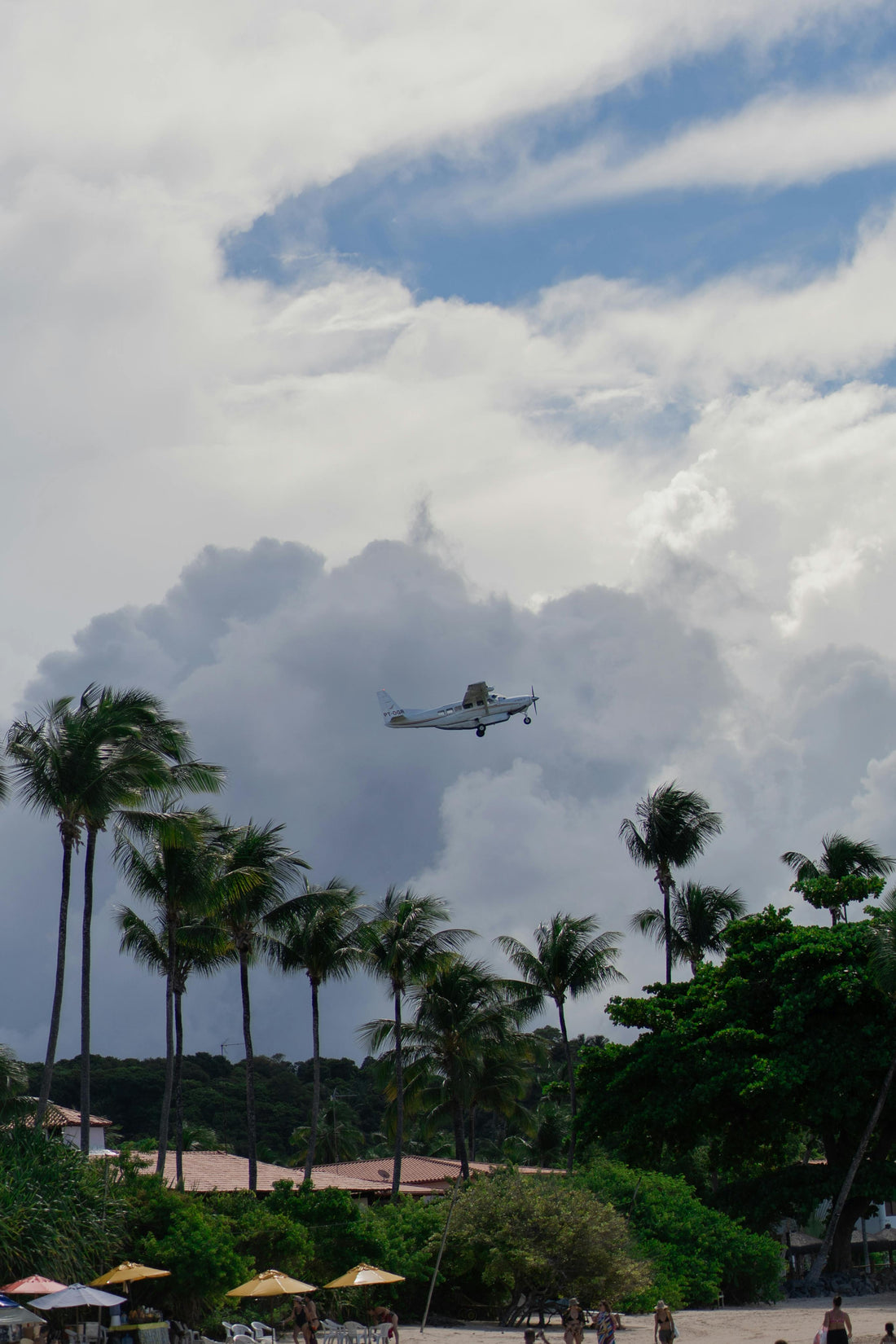
Pressure vs. Density Altitude: What Every Student Pilot Needs to Know
By Brent Taylor, CFII
If you’ve been in ground school for more than five minutes, you’ve probably heard the term density altitude. It’s one of those concepts that sounds technical and abstract at first, but once you connect it to real-world flying, it becomes one of the most important performance factors you’ll ever consider.
As a CFI, I can’t tell you how many times I’ve seen students get tripped up by density altitude. On the surface, it feels like a math exercise you just grind through with the E6B. But the reality is this: density altitude is all about how your airplane feels the air it’s flying through. It directly impacts your takeoff roll, climb performance, and even your ability to clear obstacles at the end of the runway. So, let’s break it down in a way that’s practical and useful for everyday flying. This is one of the major factors in a lot of GA accidents so pay attention!
Pressure Altitude vs. Density Altitude
First, let’s clear up some terms:
-
Pressure Altitude is the altitude your airplane thinks it’s at, based purely on pressure. You get it by setting your altimeter to 29.92 inHg. It ignores temperature, humidity, and the actual “thickness” of the air. That’s it. Simple.
-
Density Altitude takes pressure altitude and then adjusts it for non-standard temperature (and, to a lesser extent, humidity). It represents the altitude in the standard atmosphere at which the air is the same density as the air you’re flying through.
Think of it this way: Pressure altitude is a baseline. Density altitude is the “real-world” version that accounts for how hot and thin the air really is.
Why Density Altitude Matters
Airplanes fly because air molecules push over the wings, fill the cylinders, and give propellers something to bite into. Fewer air molecules = less performance, period.
When density altitude goes up, here’s what you’ll notice:
-
Longer Takeoff Rolls – Your wing generates less lift, so it takes more runway to get airborne.
-
Sluggish Climb Performance – That same thin air starves your engine and reduces propeller efficiency, so your rate of climb suffers.
-
Reduced Engine Power – Piston engines breathe less oxygen, which means less fuel can be burned.
-
Overall Sluggishness – Everything just feels… lazy.
On a hot summer day at a high-elevation airport, your airplane might perform like it’s flying at 8,000–9,000 feet—even if the runway is at 3,000 feet MSL. That’s density altitude in action.
How to Convert Pressure Altitude to Density Altitude
Okay, here’s where students usually glaze over, but stick with me. There are two main ways to get from pressure altitude to density altitude:
-
The E6B or ForeFlight method (precise, slower).
-
The quick rule-of-thumb method (approximate, faster).
Let’s look at both.
Step 1: Find Pressure Altitude
-
Set your altimeter to 29.92 inHg.
-
Read the altitude. That’s your pressure altitude.
Alternatively, you can use the formula:
Example: If the field elevation is 5,000 feet and the altimeter setting is 30.12:
So, pressure altitude is 4,800 feet.
Step 2: Correct for Temperature
Now you need to see how hot or cold it is compared to standard atmosphere.
-
Standard temperature at sea level is 15°C.
-
It decreases by about 2°C per 1,000 feet of altitude.
So at 5,000 feet, standard temperature is:
If the outside air temperature (OAT) is 25°C, that’s 20°C hotter than standard.
Step 3: Apply the Rule of Thumb
A quick way to estimate density altitude is:
Add 120 feet for every degree Celsius above standard.
Using the example:
Add that to the pressure altitude:
So the density altitude is about 7,200 feet.
That’s a huge difference—your airplane will perform like it’s at 7,200 feet even though the field is at 5,000.
Rules of Thumb Every Pilot Should Know
Here are a few shortcuts I like to give my students:
-
+120 feet per °C above standard → Density altitude increases quickly.
-
Hot + High = No Fly (well, maybe not no fly, but at least be cautious).
-
Every 1,000 feet of density altitude = noticeable performance hit in small trainers.
-
Performance charts don’t lie. If the POH says your 152 will take 1,800 feet of runway, don’t assume you’ll “beat the book.” Real-world conditions usually make it worse.
Real-World Examples
Let’s walk through a couple of scenarios like I would with a student at the whiteboard.
Scenario 1: High-Elevation Summer Day
You’re at Leadville, Colorado (field elevation ~9,900 ft). It’s 25°C outside. Standard at that altitude is about -5°C. That’s 30°C hotter than standard.
Density altitude = 9,900 + 3,600 = 13,500 feet.
Think about that. Your Cessna 172 is now operating as if it’s at 13,500 feet. Climb performance? Miserable. Takeoff roll? Very long. That’s why Leadville keeps a wrecking yard busy.
Scenario 2: Sea Level, Hot and Humid
You’re at Houston, elevation 100 feet MSL. It’s 35°C. Standard temp at sea level is 15°C, so that’s +20°C.
Density altitude = 100 + 2400 ≈ 2,500 feet.
Even at “sea level,” your airplane feels like it’s taking off from Denver on a mild day. That’s why hot summer afternoons at coastal airports can still surprise you.
Practical Tips for Student Pilots
-
Do the math before you taxi. Check the ATIS or AWOS, calculate density altitude, and compare it to your aircraft’s POH performance numbers.
-
Don’t underestimate short fields. A 3,000-foot runway at sea level might feel generous, but at 7,000-foot density altitude it gets tight quickly.
-
Think weight + DA. A loaded 172 with four adults, fuel, and bags on a hot day is a totally different airplane than the same 172 solo on a cool morning.
-
Expect lower climb rates. Don’t plan to out-climb terrain or obstacles when DA is high. Build in margin.
-
Morning and evening are your friends. Fly early or late in the day when temps are cooler and density altitude is lower.
Wrapping It Up
At the end of the day, density altitude isn’t just a test question or a chart exercise. It’s a very real, very practical factor that directly affects safety.
Remember: Pressure altitude gives you the baseline. Density altitude tells you the truth.
When in doubt, pull out your E6B or app and calculate it precisely. But also practice the rule of thumb so you can get a quick estimate in your head. As you build hours, you’ll start to feel when the DA is high—the airplane just won’t want to climb.
So next time you’re preflighting on a warm afternoon, take a second to run the numbers. You might find that your “2,000-foot” runway just got a lot shorter. And that’s the kind of awareness that makes a safe, sharp pilot.
Always respect density altitude. It doesn’t care how many hours you have—it cares how many molecules are in the air.
By Brent Taylor, CFII
If you’re a student pilot looking for helpful study tools and flight gear, NorthstarVFR.com is a trusted resource designed with your training in mind. We offer carefully curated pilot supplies and study materials, including our popular Pre-Tabbed FAR/AIM, Oral Exam Guides, kneeboards, logbooks, and more. Everything is selected to help you stay organized, pass your checkrides, and fly with confidence. Check it out and set yourself up for success in the cockpit.
